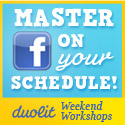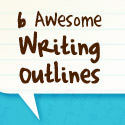“Ideas are like rabbits. You get a couple and learn how to handle them, and pretty soon you have a dozen.” – John Steinbeck
On Monday we started our conversation about the importance of brainstorming and how we go about conjuring one up. Sometimes we need a brainstorm to get the ideas flowing, or sometimes even when we’ve already had an idea come to us out of the blue, we still need a good brainstorming session to hash out the details.
So how do you get the most out of a brainstorming session? Whether you’re taking part in a group idea-a-thon or a solo think tank, we’ve put together a few basic steps to follow to ensure that your brainstorm yields a successful result.
Step 1. Clear your head.
You have to start your brainstorming process with a clear slate. Popular slate-clearing activities include taking long walks, listening to music, or closing your eyes for a few moments of quiet solitude (this is not be confused with napping, although I suppose that can be a head-clearing activity as well).
Step 2. Find a good space.
Once your mind is clear, you need to find a location that will give you lots of inspiration. Different types of people can find inspiration in all sorts of places. Some folks might prefer a park or crowded shopping mall filled with potential characters and plot lines while the others might want a blank canvas like a quiet room at home. Either way, find your perfect creative spot.
3. Get your tool(s) of choice together.
Just like the inspiration location, different people prefer different writing tools for their brainstorming session. I’m a fan of old school pen and paper myself, but if your mind tends to run at a breakneck speed, you might be able to keep up with your ideas a little better on a computer. Test out different tools until you find the one that fits you best.
4. Start with quantity.
The ultimate key to a good brainstorming session is to generate a mass of ideas. Throw all judgment aside–everything is on the table. Write down every idea that comes to mind, what starts out seeming ridiculous may turn out (with a little further thought and development) to be the perfect seed for a new novel. If you need to motivate yourself, break your brainstorming into a couple of five minute sessions with some break time in between. Aim for four or five ideas per session. If you’re in a group, discuss the ideas in between sessions and don’t be afraid to piggyback off of each other’s plans.
5. Narrow by quality.
After you’ve got a large quantity of ideas, start narrowing them down by quality. Pick out a handful you like the most and continue to expand on those ideas in your brainstorming session.
6. Keep everything!
Don’t discard anything from your brainstorming session! A tabled idea now could become your next novel idea a year or two down the road. Keep a notebook or folder with your ideas as a reference when you face writer’s block or go in search of your next idea.
How do you come up with your best ideas? Are there any tips and tricks you could share with your fellow authors? We love to hear from you, so feel free to share your thoughts in the comments below!


 We're
We're 








